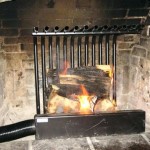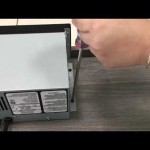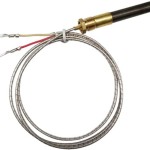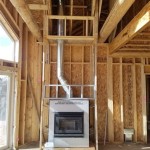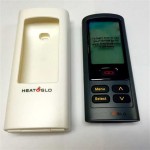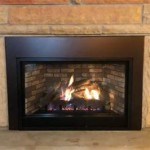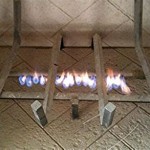Faux Fireplace Insert: A Comprehensive Guide to Electric Fireplace Alternatives
The allure of a fireplace, with its flickering flames and comforting warmth, remains a desirable feature in many homes. However, traditional wood-burning fireplaces involve significant installation costs, maintenance requirements, and environmental concerns. A faux fireplace insert presents a compelling alternative, offering the aesthetic appeal of a fireplace without the drawbacks of a conventional system. This article will discuss the characteristics, benefits, installation, and considerations associated with incorporating a faux fireplace insert into a living space.
Understanding Faux Fireplace Inserts
A faux fireplace insert, often referred to as an electric fireplace insert, is a self-contained unit designed to be installed within an existing fireplace opening or a custom-built enclosure. It primarily functions using electricity to generate heat and create a visual representation of a fire. Unlike wood-burning fireplaces, these inserts do not require a chimney, flue, or gas line, simplifying the installation process and reducing associated costs. Faux fireplace inserts are available in various sizes, styles, and functionalities to accommodate different aesthetic preferences and heating requirements.
The core components of a faux fireplace insert typically include a heating element, a flame projection system, and a control panel. The heating element, usually a resistance coil or an infrared heater, generates heat that is circulated into the room by a fan. The flame projection system utilizes LEDs, mirrors, and a rotating reflector to create a realistic flame effect. The control panel allows users to adjust the flame intensity, heat output, and other settings, providing customization and convenience.
The realism of the flame effect varies across different models. Some inserts employ advanced technologies, such as holographic imaging and three-dimensional flame projection, to create a highly convincing visual experience. Other models may use simpler designs, resulting in a less realistic but still aesthetically pleasing flame effect. The choice depends on the desired level of visual fidelity and the budget allocated for the insert.
Faux fireplace inserts offer several advantages over traditional fireplaces. They are more energy-efficient, as they convert nearly 100% of the electricity consumed into heat, minimizing energy waste. They are also safer, as they do not produce smoke, sparks, or carbon monoxide, eliminating the risk of fire hazards and respiratory problems. Furthermore, they are more convenient to use, as they require no fuel storage, cleaning, or maintenance.
Benefits of Choosing a Faux Fireplace Insert
The adoption of a faux fireplace insert presents a multitude of benefits that cater to modern living preferences and environmental consciousness. The primary advantage lies in its ease of installation. Unlike traditional fireplaces that necessitate extensive construction and venting systems, a faux insert can often be installed with minimal effort. This feature makes them a viable option for homeowners seeking to add a fireplace ambiance without undertaking major renovations. Many models are designed for simple plug-and-play operation, requiring only a standard electrical outlet.
Another significant benefit is the cost-effectiveness associated with faux fireplace inserts. The initial investment is often lower than the cost of installing a traditional fireplace, and the ongoing expenses are significantly reduced. There are no costs associated with purchasing firewood, cleaning the chimney, or maintaining a gas line. The only operating cost is the electricity consumed to generate heat and operate the flame effect.
Beyond cost and convenience, safety is a paramount consideration. Faux fireplace inserts eliminate the hazards associated with open flames, sparks, and emissions. This makes them a safer option for households with children or pets. The absence of a chimney also reduces the risk of chimney fires, which can be a significant concern with traditional fireplaces. The surface of the insert typically remains cool to the touch, further minimizing the risk of accidental burns.
Furthermore, a notable advantage is the enhanced control afforded by electric inserts. Adjustable thermostats allow for precise temperature regulation, ensuring optimal comfort. The flame effect can often be operated independently of the heating function, enabling the ambiance of a fireplace without the added heat. This feature is particularly useful during warmer months when the aesthetic appeal is desired without the need for supplemental heating.
Installation and Placement Considerations
Proper installation and placement are crucial for maximizing the benefits and ensuring the longevity of a faux fireplace insert. The first step involves selecting an insert that is appropriately sized for the intended space. The dimensions of the existing fireplace opening or the custom-built enclosure should be carefully measured to ensure a proper fit. Manufacturers typically provide detailed dimensions and clearance requirements for each model.
Before installation, the electrical capacity of the circuit serving the fireplace location should be evaluated. Faux fireplace inserts typically require a dedicated 120-volt or 240-volt circuit, depending on the heating capacity. It is essential to consult with a qualified electrician to ensure that the electrical infrastructure can safely handle the power requirements of the insert. Overloading a circuit can lead to electrical hazards and damage to the appliance.
When installing the insert into an existing fireplace opening, it is important to thoroughly clean the space and remove any debris. The insert should be securely positioned within the opening and properly secured according to the manufacturer's instructions. Gaps between the insert and the surrounding structure can be filled with fire-resistant caulk to prevent drafts and improve insulation.
For custom-built enclosures, the design should incorporate adequate ventilation to prevent overheating. The enclosure should be constructed from non-combustible materials, such as metal or concrete board, to ensure fire safety. The placement of the insert should also consider the proximity to combustible materials, such as curtains or furniture. A safe distance should be maintained to prevent the risk of ignition.
Finally, the placement of the faux fireplace insert relative to other heating and cooling systems should be considered. If the insert is intended as a supplemental heat source, it should be positioned in a location that allows for efficient heat distribution throughout the room. Avoid placing the insert in areas that are directly exposed to drafts or cold air, as this can reduce its heating effectiveness.
Maintenance and Care of Faux Fireplace Inserts
Maintaining a faux fireplace insert is a relatively straightforward process. The primary task involves regularly cleaning the unit to remove dust and debris. A soft cloth or brush can be used to wipe down the exterior surfaces. The flame projection system may require periodic cleaning to maintain optimal visual performance. Follow the manufacturer's instructions for cleaning the flame projection components, as some models may require specialized cleaning solutions.
The air intake vents should be checked periodically to ensure that they are free from obstructions. Blocked vents can restrict airflow and cause the unit to overheat. Use a vacuum cleaner or a soft brush to remove any dust or debris from the vents. Pay particular attention to the vents located on the back or sides of the insert.
The heating element should be inspected periodically for signs of damage or wear. If the heating element is not functioning properly, it should be replaced by a qualified technician. Attempting to repair the heating element without proper training can be dangerous.
The LED bulbs used in the flame projection system typically have a long lifespan, but they may eventually need to be replaced. Follow the manufacturer's instructions for replacing the LED bulbs. Make sure to use the correct type of bulb to ensure proper operation and avoid damaging the system.
If the faux fireplace insert is not being used for an extended period, it should be unplugged from the electrical outlet. This will prevent energy waste and reduce the risk of electrical hazards. The unit should be stored in a dry and well-ventilated location.
By following these maintenance and care guidelines, users can ensure the longevity and optimal performance of their faux fireplace insert. Regular maintenance will also help to prevent costly repairs and prolong the lifespan of the unit.

10 Decorative Options For A Fake Fireplace Insert Grace In My Space

10 Decorative Options For A Fake Fireplace Insert Grace In My Space

Diy Faux Fireplace For Under 600 The Big Reveal Bless Er House

How To Make A Movable Faux Fireplace Part Two Pneumatic Addict

15 Stunning Diy Fake Fireplace Ideas To Make Now Twelve On Main

Puraflame S Electric Fireplace Is So Realistic You D Never Know It Led Best Fake Fireplaces

The Best Electric Fireplace Inserts In 2024 Domino

10 Decorative Options For A Fake Fireplace Insert Grace In My Space

25 Diy Faux Fireplace Ideas Build Your Own Fake Suite 101

How To Make A Faux Fireplace Insert With Real Logs Interior Frugalista
Related Posts

